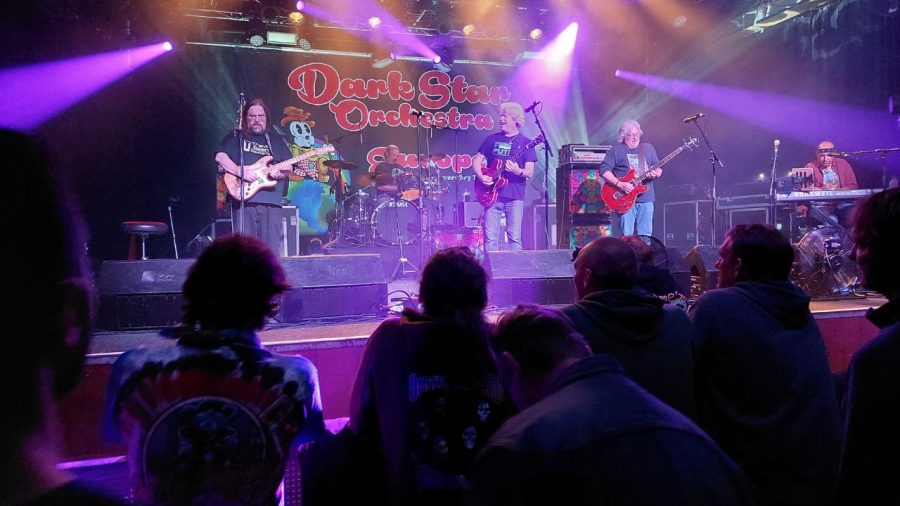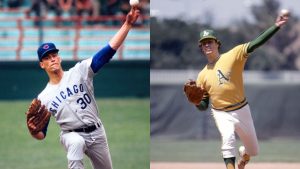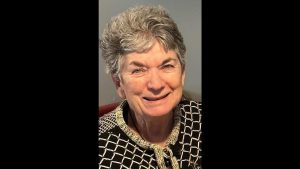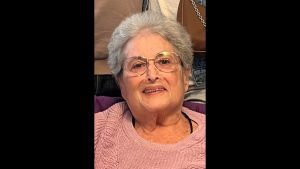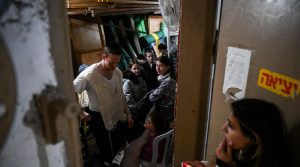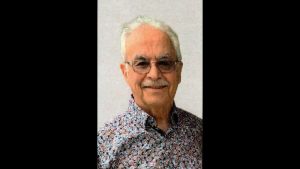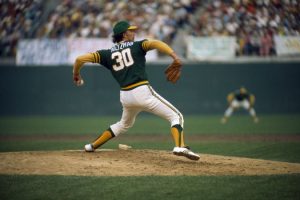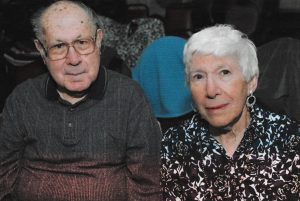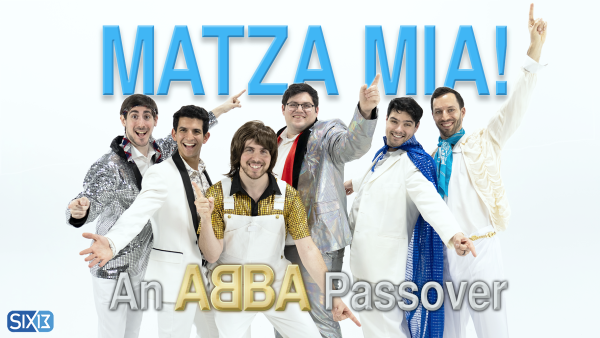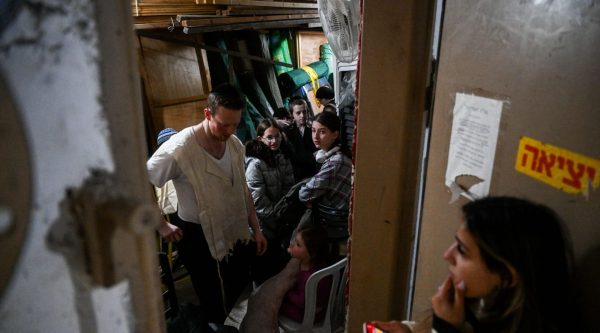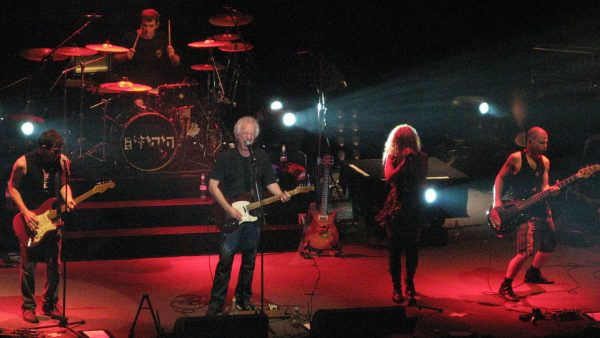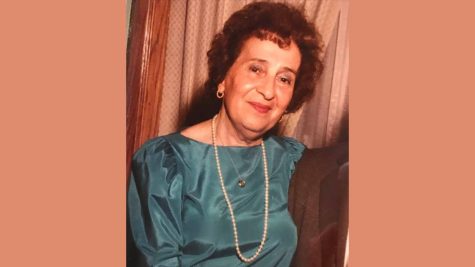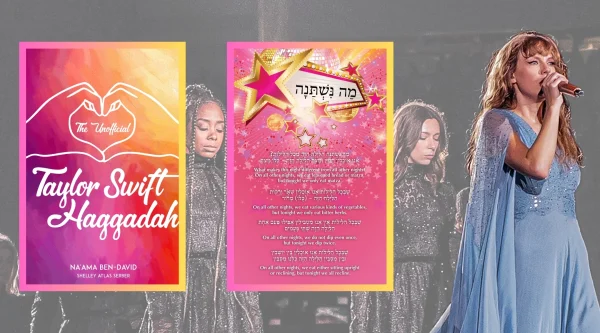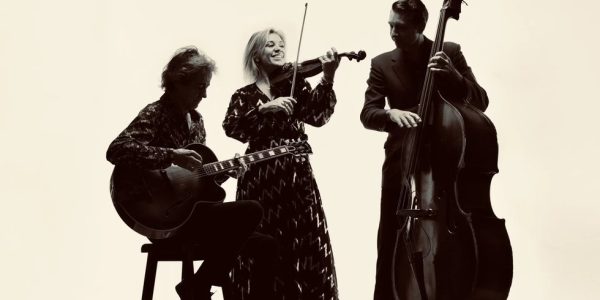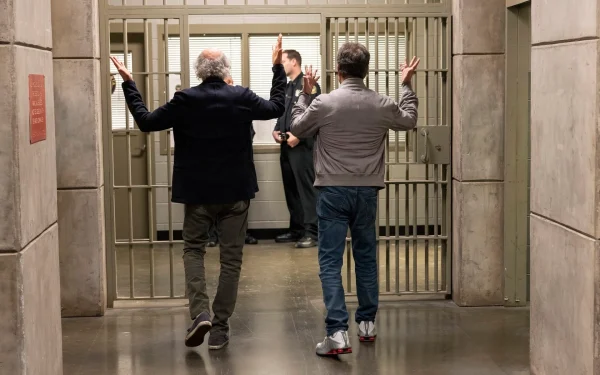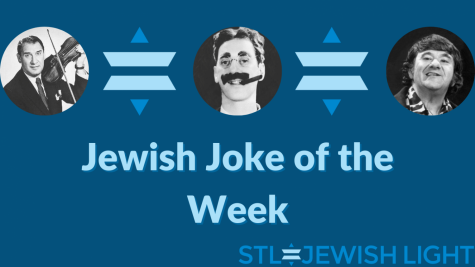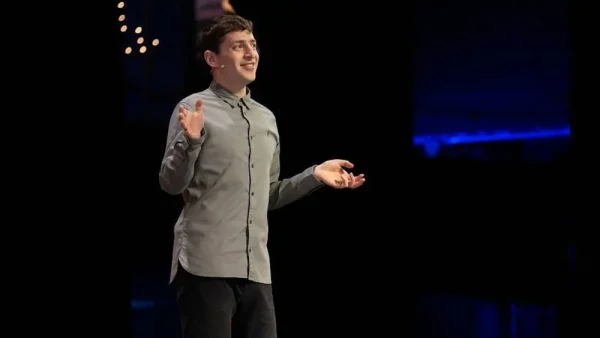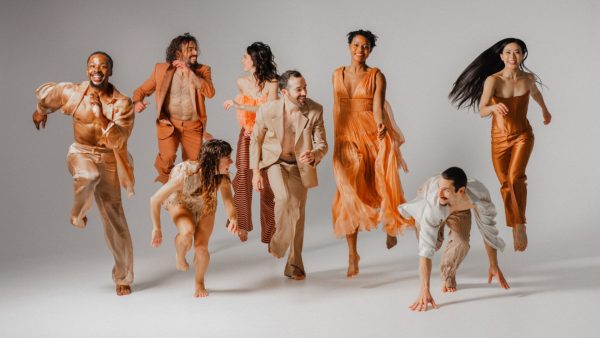Truckin’ to Berlin with Grateful Dead with tribute band Dark Star Orchestra and Robert Koritz
Published October 17, 2022
BERLIN – “Are you out of your mind? You’re going to fly to Berlin to see a cover band?”
That was the common response when I told friends and family that I was indeed doing that. It was also my own reaction… in the days and weeks before and after I plunked down the money for the ticket, airfare and hotel, upon the urging of my buddy Alan,
Because within that sparse black-and-white framework, it was kind of a crazy thing to do. However, this was no ordinary cover band, nor just another concert.
In 1972, the Grateful Dead, already an established underground institution in the United States, undertook their first sustained tour of Europe, where their following at the time was tenuous. The band, along with a couple of dozen family and friends, commandeered two buses and crisscrossed the continent performing a month of shows that entered the annals of the band’s legend as a peak period – chronicled on the triple album Europe 72 – and cemented their European fan base forever more.
Fifty years later, the Dark Star Orchestra – arguably America’s most authentic and accomplished Grateful Dead tribute band out of dozens currently performing – brought a much smaller, more focused contingent to Europe to reenact part of that fabled tour – their first prolonged visit to the continent.
The Dark Side Orchestra can recreate a Grateful Dead show
Having seen the DSO three times previously on different visits to the US, I knew that they could recreate a Dead show with more precision and energy than their prototype could sometimes muster. So, despite the streamlined nature of the venture, there was still enough fairy dust in the air, colorful characters on the sidelines and a strong will to recreate the good vibes of 1972, to induce me to put aside the cover band stigma and realize that this could be a retro celebration that was not to be missed. Apparently, I wasn’t the only one.
A COUPLE of hours before last week’s show, in a shakedown industrial section-turned entertainment center of Berlin populated by pubs, doner kebab stands and performance lofts, the scruffy family that has been labeled with the moniker “Deadheads” was gathering and mingling. For every graying, old-time fan out to recapture past glory, there were young partiers who hadn’t even been born when the Grateful Dead frontman, Jerry Garcia, died in 1995, effectively ending the life of the iconic band that had formed in 1965.
A meet-up at the Badehaus pub, organized by a member of the Israel Grateful Dead Facebook page, found a dozen or so young Hebrew speakers sharing beer and stories in a corner. Some of them, like Koby, lived in Berlin, while others had flown into the German city specifically for the show or for a European jaunt to follow the band around.
On the other side of the terrace were a handful of couples, one who had arrived from England after seeing the show that opened the tour the previous week, another from California who was attending every stop in Europe, and various other fellow travelers, most attired in clothes sporting some kind of Dead insignia. Tie-dye abounded.
What united them all was a love of the Grateful Dead’s music, a combination of Chuck Berry-style rock and roll, country, blues and jazz twists, psychedelic excursions and loads of improvisation. In their own era, and even more so now, in the cookie-cutter, highly planned and synchronized setlists and arrangements most musical acts follow, the Dead were and are an anomaly.
And so are the DSO. Celebrating its 25th anniversary this year, they average between 100 and 150 shows a year. They choose a particular performance from the Dead’s nearly 30 years of touring and recreate it as faithfully as possible.
If the show was after 1976, there are two drummers, as per the Dead’s lineup. If it was post-1971, there’s a female background vocalist (Lisa Mackey) for the parts by Donna Godchaux… and so on. They’re so faithful to the sound and instrumentation that the musician filling Garcia’s lead guitar role, Jeff Mattson, is even playing one of Garcia’s fabled guitars.
And as part of their shtick, the band doesn’t announce which show it was until the end (although a quick Google search will solve the mystery for those not wanting to wait.) The DSO had already performed in London, Paris and Frankfurt to sterling reaction, faithfully recreating those particular shows from the Dead’s 1972 tour; however, they hadn’t played in Berlin on that tour, thus arousing speculation about what tonight’s set list would be.
“I’m pretty sure they’re going to perform the Hamburg show tonight,” said the California guy, ensconced in a corner of the Badehaus terrace nursing a beer.
NEARBY, OUTSIDE the show’s venue, the Astra Kulturhaus, a dozen or so young American hippie-clad fans were gathered on a stoop, summoning energy for another DSO show. Looking like they had stepped out of 1972, they had been following the band throughout without tickets or plans for lodging, preferring to wing it and hope for the best… a lot like the kids who used to follow the Dead on their tours hoping for a miracle ticket.
Now with the band defunct for nearly 30 years and never having experienced the Grateful Dead in their lifetimes, they are enjoying the next best thing. Of course, there is Dead & Company – the Grateful Dead offshoot featuring three original Dead members, Bob Weir, Bill Kreutzmann and Mickey Hart, but the tickets costs are higher, the tempos less steady and the shows are far more infrequent.
“I’ve seen Dead & Company many times but to be honest, the DSO sounds so much more like the Dead,” said one of the youngsters, walking around the gathering crowd with his index finger raised – the universal Dead sign of looking for a ticket.
A couple of hundred meters away at an outdoor café, one of the DSO’s two drummers, 53-year-old Rob Koritz, is relaxing after the band’s sound check.
“The tour has been amazing so far. We weren’t sure what to expect in Europe.”
Rob Koritz
“The tour has been amazing so far. We weren’t sure what to expect in Europe,” said the Jewish Koritz, a St. Louis resident who first saw the Dead as a high school student in 1987 in Chicago and has been on the bus ever since. A professionally trained drummer, he joined the DSO a couple of years into the band’s existence.
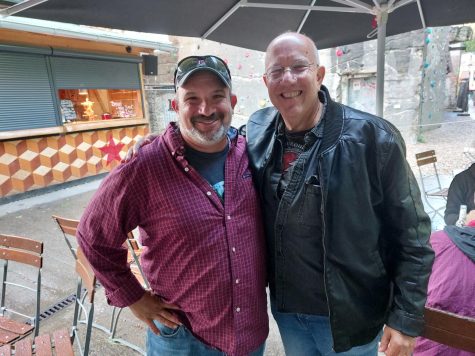
Drinking preshow tea, he tried to explain the appeal of a long-defunct band to such a diverse audience. At the top of the list is the Dead’s decision early in their career to let fans tape their shows. Those tapes have evolved into a musical encyclopedia that has been handed down to new generations of Deadheads.
“They were setting this culture up that would remain until today,” said Koritz, who when he’s not on the road, lives a domestic life with his wife and three children and serves on the board of Camp Sabra, a Jewish summer sleepaway camp in Missouri.
“And, of course, part of it is the fellow-travelers thing. I think they come for the music, the scene and adventure – you never know what you’re going to get from night to night.”
“And for me, a huge part of it is the lyrics. I think the Dead’s lyricists, Robert Hunter and John Barlow, gave you words to live by.
“So many times, something that Hunter or Barlow wrote will speak to me when I need it. If I have a difficult life decision to make, I say ‘Fare thee well, let your life proceed by its own designs’ (from the Weir-Barlow song “Cassidy”) and it reminds me that whatever I decide, it will be right for me.”
Although playing in the DSO provides a comfortable income, Koritz said that he wouldn’t have been able to sustain a career in a tribute band if it wasn’t the Dead’s music.
“The main thing for all of us in the band is that we’re fans and we love the music… Sure, there are some songs I’d be very happy never to play again, but there are others I love to play every time,” he said, citing “The Music Never Stopped” as his personal favorite.
“Whenever we get to the line ‘People joining hand in hand, the music plays the band,’ my energy level goes up. Because that’s exactly what happens on a good night, the audience takes over.”
INSIDE THE Astra Kulturhaus, the cavernous room is filling up with 1,000-plus Deadheads as show time approaches and one of those good nights is in the sweet-smelling air.
Besides the Israeli contingent and American kids (who had miraculously nabbed tickets), the audience consisted of, as Koritz pointed out beforehand, “fans from 20 to 70,” including old German and European hippies, conventional-looking couples, young, well-dressed college students and everything in between.
The band opened up with the expansive jam tune “Playing in the Band” (the California guy was right – Hamburg) and ended up the show some four hours later (minus a half-hour break) with another Dead classic “Uncle John’s Band,” before gifting the crowd with some post-Hamburg encores, “Box of Rain” and “Ripple.”
Koritz explained that each band member listens to the show planned for that night’s performance to glean any nuances, changes or innovations the Dead brought to their repertoire.
“I still discover new things about the music each time I listen. And I’m still blown away by their musicianship,” he said.
The audience was in ecstasy throughout the show. Despite the nearly-full attendance, there was plenty of room on the sides of the standing-only hall for spinners, a type of free-form, often recreational drug-induced dance that originated with Deadheads.
Watching the crowd was almost as much fun as listening to the band. There was a flower-child/woman throwback in a wide-brimmed hat who maneuvered through the crowd spreading her good vibes with willing dance partners. The Israelis were enthusiastically gyrating to every beat and intermittently hugging each other. One Israeli attendee was Summit Rosenberg, an American-born guitarist who plays in Israel’s youngest and most tuneful Dead cover band, Tel Aviv-based Abilene.
“I’m watching the interplay between the musicians up there and it’s blowing me away,” he said.
Onstage, celebrated Grateful Dead photographer Bob Minkin, who recently released a well-received book of photos of Dead guitarist Bob Weir called Just Bobby, was shooting the band and crowd from every angle, lending an extra dimension of legitimacy from the Dead community.
During the intermission between the two 90-minute sets, 60-something German fan Walther Galubitt and his partner rested on a set of bleachers in the back of the room. A professional harmonica player, he explained that he had seen the Dead on their 1972 tour in Germany as a teenager and was so excited to find out that DSO was touring, he got in touch with the band’s keyboardist Rob Barraco
“When they played in Frankfurt a couple of nights ago, they invited me on stage for a harmonica solo,” he nonchalantly added, before producing a video clip of him and Mackey duetting on the DSO’s version of the Dead’s version of Elmore James’ “It Hurts Me Too.” The Europe 72 tour was one of the Dead’s last with Ron “Pigpen” McKernan, the band’s original lead singer, harpist and blues purists, who died the next year.
“I only found out a few minutes before I was going up onstage, which is a good thing because I wouldn’t have been able to enjoy myself. I was so nervous,” he said.
Like any Dead show, Berlin had moments of brilliance (spirited versions of “Jack Straw” and “Black Throated Wind”), intense jamming (“He’s Gone” and “Sugar Magnolia”) and some tedium (an overlong “Dark Star” that fell into a meandering rabbit hole).
The crowd was with them through all the twists and turns, and the final sing-alongs felt like a community had been forged, creating a feeling that justified all the travel hassles to Berlin.
As photographer Minkin summed up the evening and the tour, “What an epic ride, full of amazing experiences.”
With enthusiastic crowds and spirited performances, the DSO tour of Europe, although not a big money maker, may prove to be a springboard for future anniversary-based shows, including a possible trip to the Promised Land.
Coming up in 2028 will be the 50th anniversary of the Dead’s mystical journey to Egypt, where they performed three shows next to the Pyramids. Koritz, who hasn’t visited Israel since he was a teenager, said he’s down for it.
“If we’re still around, we would love to do that and then come play in Israel,” said Koritz enthusiastically.
Whether that comes to fruition, the DSO and the ragtag group of followers who gathered in celebration in Berlin last week proved that the Grateful Dead’s long strange trip is far from over.



